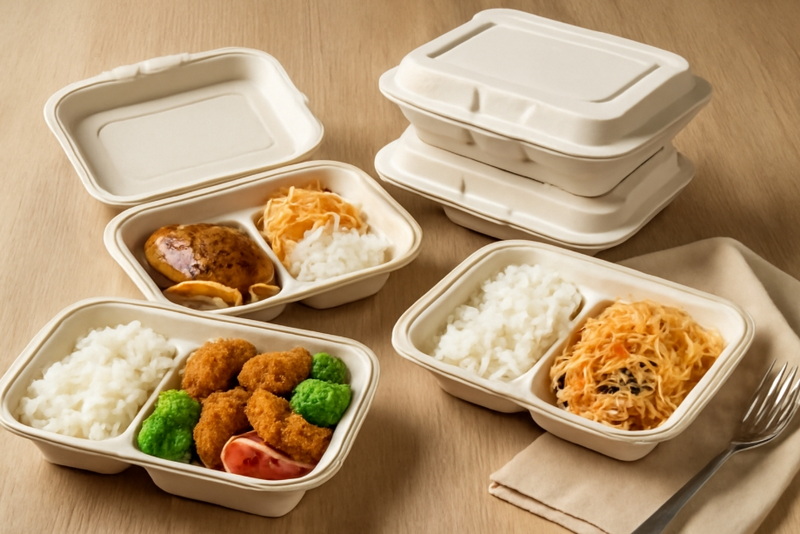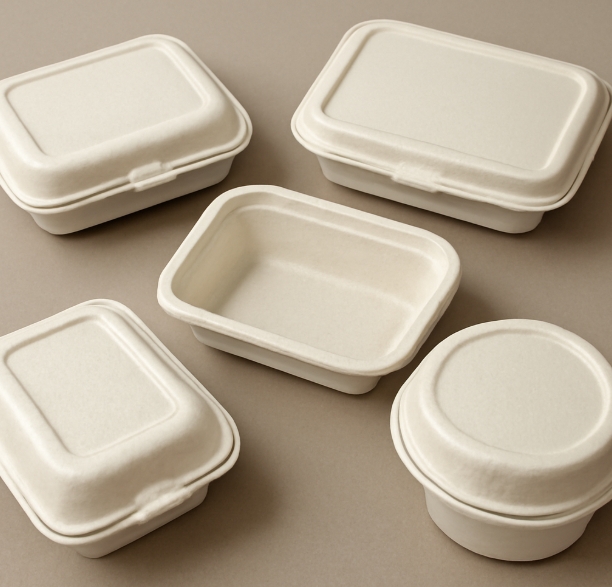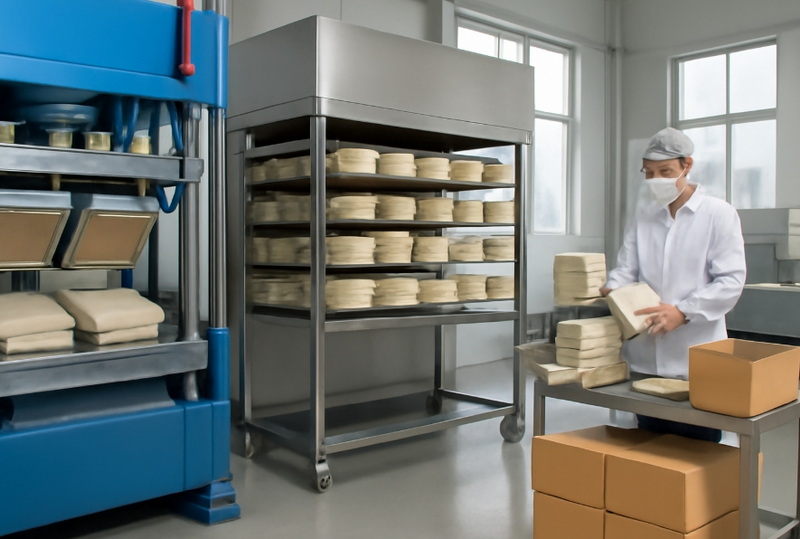
Content Menu
● What Is Sugarcane Pulp?
>> Key Features of Sugarcane Pulp
● How Are Disposable Sugarcane Pulp Lunch Boxes Made?
>> 1. Collection of Bagasse
>> 2. Pulping and Cleaning
>> 3. Molding and Shaping
>> 4. Drying and Finishing
>> 5. Quality Control and Packaging
● Properties and Advantages of Sugarcane Pulp Lunch Boxes
>> Eco-Friendliness
>> Biodegradability and Compostability
>> Durability and Versatility
>> Safety and Certification
>> Customization and Branding
● Environmental Impact and Sustainability
>> Waste Reduction
>> Compostability
>> Circular Economy
● Practical Applications
>> Food Service Industry
>> Events and Catering
>> Schools and Offices
>> Retail and Supermarkets
● Conclusion
● FAQ: Common Questions About Disposable Sugarcane Pulp Lunch Boxes
>> 1. What raw materials are used in disposable sugarcane pulp lunch boxes?
>> 2. Are sugarcane pulp lunch boxes safe for microwaves and freezers?
>> 3. How long does it take for a sugarcane pulp lunch box to biodegrade?
>> 4. Can these lunch boxes hold oily or liquid foods without leaking?
>> 5. Is it possible to customize sugarcane pulp lunch boxes with logos or special designs?
As the world becomes more environmentally conscious, the search for sustainable alternatives to single-use plastics intensifies. Among the most promising solutions is the disposable sugarcane pulp lunch box. These eco-friendly containers are rapidly gaining traction in restaurants, catering services, schools, and households, offering a practical and responsible way to package and transport food. But what exactly are these lunch boxes made of, and why are they considered such a breakthrough in sustainable packaging?
This comprehensive article explores the origins, manufacturing process, properties, environmental benefits, and practical applications of disposable sugarcane pulp lunch boxes. By the end, you'll understand why they are fast becoming the go-to choice for eco-conscious consumers and businesses.

What Is Sugarcane Pulp?
Sugarcane pulp, also known as bagasse, is the fibrous residue left after extracting juice from sugarcane stalks. Traditionally, bagasse was considered agricultural waste and often burned or discarded. However, advances in material science have transformed this byproduct into a valuable raw material for making biodegradable products, including disposable lunch boxes.
Key Features of Sugarcane Pulp
- Renewable Resource: Sugarcane is a fast-growing crop, making its byproducts a sustainable source of raw material.
- Biodegradable: Products made from sugarcane pulp naturally decompose within a few months, leaving no toxic residue.
- Compostable: After use, these lunch boxes can be composted, returning nutrients to the soil and closing the loop in the product lifecycle.
How Are Disposable Sugarcane Pulp Lunch Boxes Made?
The journey from sugarcane field to lunch box involves several steps, each designed to maximize sustainability and product quality.
1. Collection of Bagasse
After sugarcane is processed for juice, the leftover fibrous material-bagasse-is collected. This material is rich in cellulose, making it ideal for molding into sturdy shapes.
2. Pulping and Cleaning
The bagasse is washed and pulped, breaking it down into fine fibers. Sometimes, a blend of other plant fibers such as bamboo or wood pulp is added to enhance strength and flexibility, depending on the desired product characteristics.
3. Molding and Shaping
The pulp is mixed with water to form a slurry, which is then poured into molds. High temperatures and pressure are applied, shaping the pulp into lunch boxes, trays, or other containers. This process ensures that the final product is both sturdy and lightweight.
4. Drying and Finishing
Once molded, the lunch boxes are dried, trimmed, and sometimes coated with food-safe, biodegradable agents to enhance water and oil resistance. Some products may also undergo bleaching, typically with hydrogen peroxide, to achieve a white appearance.
5. Quality Control and Packaging
Finished lunch boxes are inspected for quality, packed, and shipped for distribution. Many manufacturers offer customization, allowing businesses to print logos or create unique designs.
Properties and Advantages of Sugarcane Pulp Lunch Boxes
Eco-Friendliness
- No Trees Cut Down: Unlike paper products, which often require tree harvesting, sugarcane pulp lunch boxes utilize agricultural waste, reducing deforestation.
- Reduced Carbon Footprint: Using plant-based waste reduces greenhouse gas emissions compared to petroleum-based plastics.
Biodegradability and Compostability
- Fast Decomposition: In composting conditions, these lunch boxes break down within a few months, leaving behind organic matter beneficial for soil.
- No Harmful Chemicals: Decomposition does not release toxins, making them safe for the environment.
Durability and Versatility
- Sturdy Construction: Sugarcane pulp lunch boxes are strong, able to hold hot, cold, wet, or oily foods without leaking or collapsing.
- Heat and Cold Resistant: They are microwave-safe and can be used in refrigerators and freezers.
- Oil and Water Resistance: Special food-grade coatings or additives make these boxes resistant to oil and water, suitable for a variety of cuisines.
Safety and Certification
- Food-Grade Materials: Sugarcane pulp containers are certified safe for food contact, meeting international standards.
- No Harmful Additives: Most products are free from plastics, heavy metals, and other hazardous substances.
Customization and Branding
- Logo Printing: Businesses can print their logos or branding on the lunch boxes, enhancing their eco-friendly image.
- Variety of Sizes and Shapes: Available in multiple sizes and configurations to suit different food items and serving needs.

Environmental Impact and Sustainability
Waste Reduction
By transforming agricultural waste into useful products, sugarcane pulp lunch boxes help reduce landfill burden and minimize the need for incineration, which can release harmful emissions.
Compostability
After use, these lunch boxes can be composted at industrial facilities or even in home compost piles, turning into nutrient-rich humus that supports plant growth.
Circular Economy
The use of renewable, fast-growing crops like sugarcane supports a circular economy, where resources are continually reused and recycled, reducing reliance on finite fossil fuels.
Practical Applications
Food Service Industry
Restaurants, cafes, and food delivery services increasingly rely on disposable sugarcane pulp lunch boxes to package meals sustainably. Their leak-proof and heat-resistant properties make them ideal for takeout and delivery.
Events and Catering
Eco-friendly events and caterers use these lunch boxes to minimize waste and demonstrate commitment to sustainability.
Schools and Offices
Disposable sugarcane pulp lunch boxes are a safe and practical choice for school lunches and office meals, especially where convenience and environmental responsibility are priorities.
Retail and Supermarkets
Pre-packaged meals and fresh produce are often sold in sugarcane pulp containers, appealing to eco-conscious shoppers.
Conclusion
Disposable sugarcane pulp lunch boxes represent a significant advancement in sustainable food packaging. Made from the fibrous byproduct of sugarcane processing, these containers are renewable, biodegradable, compostable, and sturdy enough for a wide range of food applications. Their adoption helps reduce plastic pollution, supports circular economy principles, and aligns with the growing global commitment to environmental stewardship.
By choosing sugarcane pulp lunch boxes, individuals and businesses can enjoy the convenience of disposables without compromising on quality or the health of the planet. As technology and awareness continue to evolve, these eco-friendly solutions are poised to become the new standard in food packaging.

FAQ: Common Questions About Disposable Sugarcane Pulp Lunch Boxes
1. What raw materials are used in disposable sugarcane pulp lunch boxes?
Disposable sugarcane pulp lunch boxes are primarily made from bagasse, the fibrous residue left after extracting juice from sugarcane. Sometimes, other plant fibers such as bamboo or wood pulp are added to enhance strength and flexibility, but the main ingredient remains sugarcane bagasse.
2. Are sugarcane pulp lunch boxes safe for microwaves and freezers?
Yes, these lunch boxes are microwave-safe and can also be used in freezers. They are suitable for reheating and storing both hot and cold foods without losing integrity or leaching harmful chemicals.
3. How long does it take for a sugarcane pulp lunch box to biodegrade?
Under composting conditions, disposable sugarcane pulp lunch boxes typically biodegrade within a few months. After decomposition, they leave behind organic matter that can be used as fertilizer, contributing to soil health.
4. Can these lunch boxes hold oily or liquid foods without leaking?
Yes, most sugarcane pulp lunch boxes are treated with food-grade, biodegradable coatings or additives that make them oil and water resistant. This ensures they can safely hold a variety of foods, including those with high moisture or fat content.
5. Is it possible to customize sugarcane pulp lunch boxes with logos or special designs?
Absolutely. Many manufacturers offer customization options, allowing businesses to print logos, brand names, or unique designs on the lunch boxes. This not only enhances brand visibility but also communicates a commitment to sustainability.

















